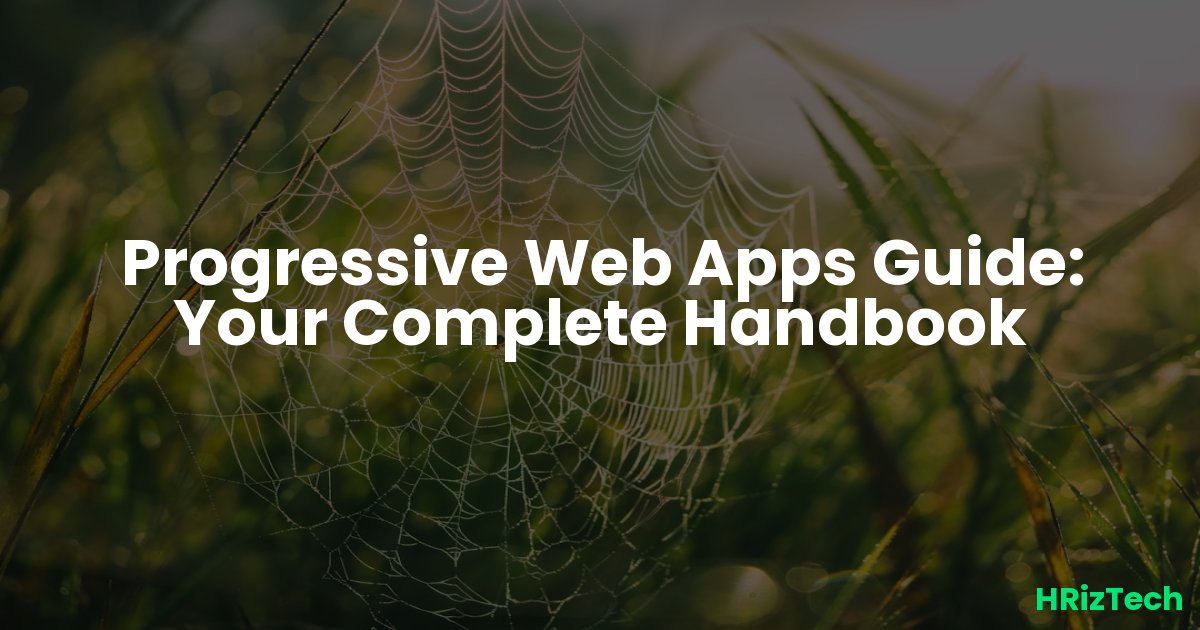Progressive Web Apps Guide: Your Complete Handbook

Progressive Web Apps Guide: Your Complete Handbook
Ever wished your website felt as snappy and responsive as a native app? That's the magic of Progressive Web Apps (PWAs)! This Progressive Web Apps Guide will walk you through everything you need to know about these game-changing applications.
What are Progressive Web Apps (PWAs)?
PWAs are essentially websites that act like apps. They combine the best of both worlds: the accessibility of a website with the functionality and performance of a native mobile app. Think of them as supercharged websites that can work offline, send push notifications, and even be added to your home screen, just like any other app.
Key Features of PWAs
- Fast Loading: PWAs are designed for speed, ensuring a smooth user experience.
- Offline Functionality: Access key features even without an internet connection.
- Push Notifications: Engage users with timely updates and alerts.
- Home Screen Installation: Provide users with easy access via app-like shortcuts.
- Responsive Design: Work seamlessly across all devices.
Why Should You Care About PWAs in 2024?
In today's fast-paced digital world, user experience is everything. PWAs deliver an unparalleled experience, leading to increased engagement and conversion rates. A 2023 study by Google showed a significant increase in user retention for businesses that implemented PWAs.
How Do I Start Building a PWA? A Step-by-Step Guide
Building a PWA isn't as daunting as it sounds. You'll need a solid understanding of web development fundamentals, including HTML, CSS, and JavaScript. But don't worry, there are tons of resources available to help!
Step 1: Choose Your Tech Stack
You'll need a solid foundation in web technologies. Frameworks like React, Angular, or Vue.js can simplify the process. There are also tools that help with the PWA-specific aspects.
Step 2: Implement a Service Worker
The service worker is the heart of a PWA. It allows for offline functionality and push notifications. It's a JavaScript file that runs in the background, independent of the main web page.
Step 3: Manifest File
The manifest file (manifest.json) tells the browser about your PWA: its name, icon, display mode, and other essential details. This is crucial for the app-like experience.
Step 4: Testing and Deployment
Thorough testing is vital. Ensure your PWA functions correctly offline and on various devices. Once tested, deploy it to your web server.
What are the Future Trends for PWAs?
The future of PWAs is bright! We can expect even more integration with AI and improved security features. A 2025 Gartner report predicts a significant rise in AI-powered PWAs, enhancing user experiences with personalized recommendations and chatbots. Cybersecurity will also become increasingly critical, with more focus on protecting user data in PWAs.
How Can I Integrate AI into My PWA?
Integrating AI into your PWA can significantly enhance user engagement. Think personalized recommendations, AI-powered chatbots, and smart search functionalities. However, remember to prioritize user privacy and data security when incorporating AI.
Conclusion: Your Progressive Web Apps Guide to Success
This Progressive Web Apps Guide has provided you with a solid foundation for understanding and developing PWAs. Remember, PWAs are a powerful tool to elevate your web presence. By focusing on speed, reliability, and user experience, you can create a truly engaging application that sets you apart.
What are your thoughts on the future of PWAs? Do you think they'll become even more prevalent in the coming years?
What’s your favorite tool for building PWAs? Share in the comments!
Comments
No comments yet. Be the first to comment!